How and how to feed remontant strawberries?
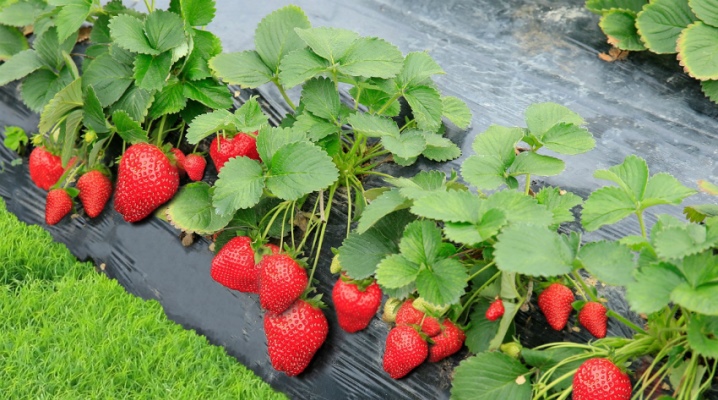
Thanks to the efforts of breeders, today every summer resident has the opportunity to have fragrant, sweet strawberries on his site all season. For this purpose, remontant varieties of this berry were bred. Some of them are capable of bearing fruit continuously from spring to autumn, others give powerful harvests in May-June, and then in July, August, September.
But just planting such plants does not mean having a crop. Intense flowering and fruiting of any crop leads to huge expenditures of plastic and energy substances. Their replenishment comes from the soil, which means that it requires special care, otherwise it will quickly become depleted, and the plants on it will wither. About what, when and how to feed remontant strawberries will be discussed in this article.

Timing
Gardening catalogs are full of beautiful photographs of large varieties of strawberries, which often bear fruit throughout the summer season. The main condition for the cultivation of such plants is the creation of a high level of agricultural background, timely application of a sufficient amount of fertilizers, ensuring balanced irrigation and regular loosening of the soil. Compliance with these requirements guarantees multiple harvests in summer and even autumn.
There is a specific fertilization scheme.
- In the first year after planting. During this period, strawberries require a minimum amount of fertilizer. The nutrition of the bushes is provided by pre-planting soil preparation.
- In the second year, mineral and organic substances are introduced.
- Third year. The use of exclusively mineral complexes is recommended.
- Fourth year. This is the last year of growing bushes before changing the site. Due to the significant depletion of the soil, it is necessary to add a significant amount of organic matter and mineral fertilizers to it.
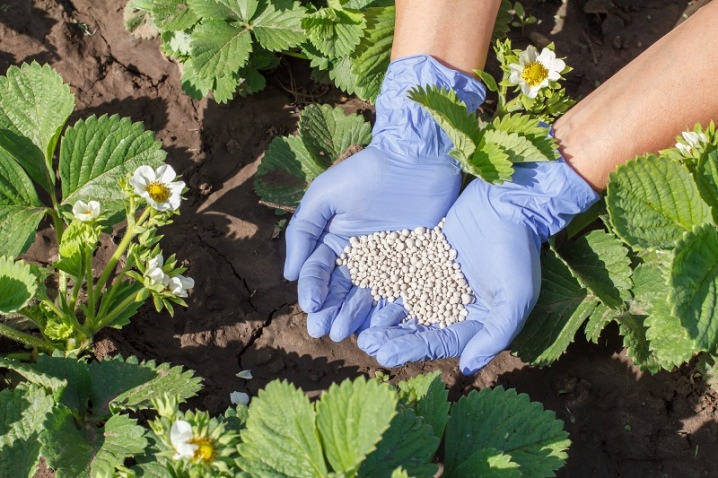
Fertilization is carried out in stages from spring to autumn. The pledge of the future harvest is laid even at the stage of preparing the plot for strawberries. A sufficient amount of organic matter is introduced into the soil. The manure will be overheated for about 4 years, providing the plants with the necessary substances. In the spring, while loosening the beds, nitrogen fertilizers are applied. Before flowering, fertilizing with potash fertilizers is necessary.
You can feed strawberries with dry fertilizers, sprinkling them on the ground before loosening, or you can treat the beds with drugs dissolved in water. The advantage of liquid fertilizers is their faster assimilation by plants. When using industrial preparations, it is necessary to strictly follow the recommendations, adhering to the required doses of application.
At too high doses, the bushes will fatten without producing fruit, and in the case of low concentrations, the treatment will become useless.

Fertilizers
Strawberry is a capricious plant, especially remontant. To get a good harvest, proper care and timely fertilization are necessary.
All fertilizers can be divided into three groups.
Chemicals
These products can significantly improve the taste and appearance of the fruit. They are easy to use, and it is not difficult to calculate the doses of working solutions. Besides, the grower always understands what substances and in what volume he introduces in a particular period. Chemical preparations are single-component: potassium and magnesium sulfates, urea, superphosphate. There are complex preparations: azofosk, nitroammofosk, ammophos.
Among the mineral complexes, the most popular are "Kristalon", "Ideal", "Ryazanochka". Their composition is strictly balanced and contains the required percentage of zinc, magnesium, potassium, nitrogen, phosphorus, cobalt. The disadvantages of chemical preparations include their destructive effect on the microflora of the soil and insects.
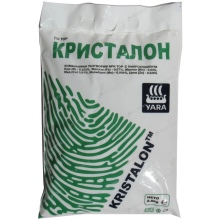
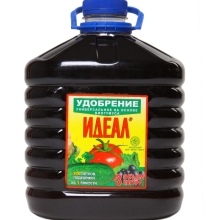
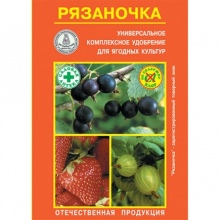
Organic fertilizers
They are not inferior in popularity to chemical preparations, with a special preference for lovers of organic farming. More often than others, mullein is used as a fertilizer. It is diluted with water in certain proportions. Such a substance is rich in nitrogen compounds and accelerates the development of the green mass of the bush.
Bird droppings have a similar effect. It is purchased dry and then diluted in water.
It is necessary to work with this fertilizer carefully, otherwise the increased concentration of the solution can cause burns to the plants.
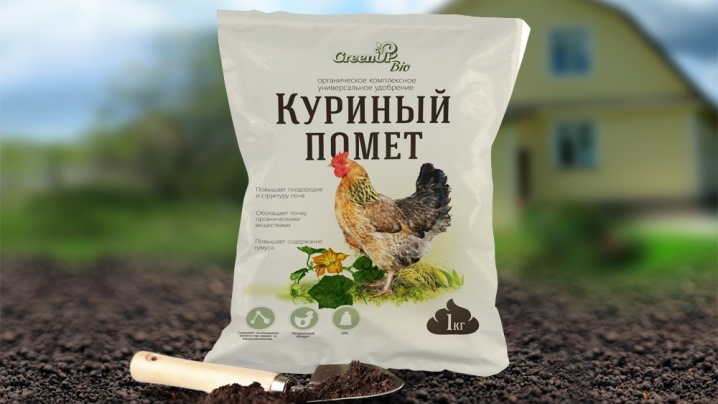
Summer residents do not bypass both humus and ash. Ash can be sprinkled on the ground around the plants in a dry form or watered with water infusion. Water infusions of green herbs are of great benefit. It is very simple to cook them, for this, all the destroyed weeds are put into a barrel, poured with water and left to ferment. You can enhance fermentation by adding kefir or yeast to the infusion. The finished infusion is diluted 1:10 with water and poured over the strawberries.
Overripe compost is used for fertilizing and mulching plants. It contains a huge amount of nitrogen, which is necessary for fruiting plants.
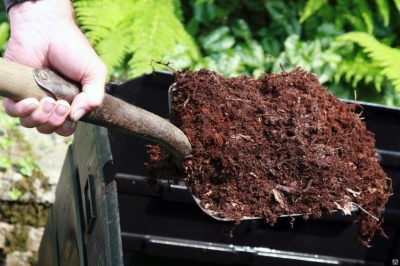
Folk remedies
Their use makes it possible to obtain high yields without the use of chemicals and at the same time find useful use for household waste. Such a remedy can be a tincture of bread crusts. The remains of fermented milk products will help improve the acidity of the soil, in addition, such a solution is rich in calcium, sulfur, phosphorus, and contains dozens of amino acids. By spraying strawberry bushes with milk, you can get rid of pests. It is not difficult to prepare a yeast solution; for this, the raw materials are poured with water, a little sugar is added.
If the bushes are treated with a boric acid solution, the berries will begin to tie better. To restore the bushes after fruiting, you can use an aqueous solution of iodine.
Good results are obtained by using folk remedies together with organic matter - ash, humus, manure, compost.

How to deposit correctly?
It is necessary to fertilize remontant strawberries throughout the season. Proper care of such plants in open and closed ground will allow you to get the maximum yield.
This process is divided into the following main periods:
- for spring feeding;
- top dressing during flowering and fruiting;
- after the completion of fruiting.
Traditionally, spring feeding begins in early spring. It must be carried out immediately after the snow melts, before the beginning of the growing season. This operation is combined with pruning old leaves on plants and tidying up the beds.
Functionally, the first top dressing is designed to provide the plant with a supply of nutrients before the rapid growth of the green mass of the bushes. First of all, nitrogen-containing complexes are needed - nitrate, urea. These preparations will be able to ensure not only good development of plants, but also a large yield of large fruits. It is better to add them in the form of aqueous solutions. In this form, it will be much easier for plants to assimilate useful components from fertilizers.
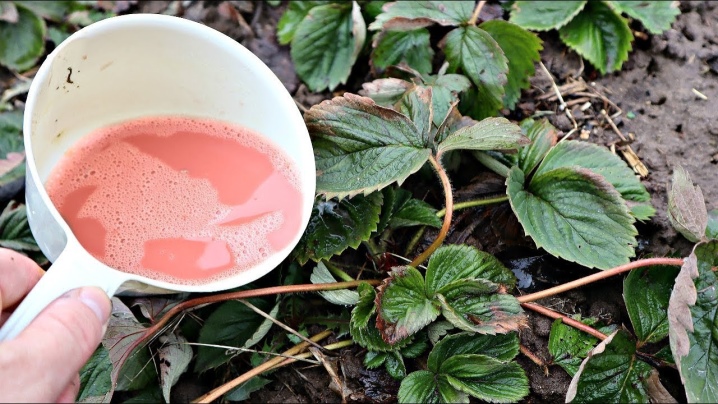
Fertilization during the flowering period begins in mid-May during the mass flowering of strawberries. For the successful formation of flower stalks, plants need potassium. In addition, a sufficient supply of this mineral will give the berries a large size, make them sweet and juicy.
During the flowering period, it is recommended to introduce:
- potassium nitrate;
- ash;
- chicken droppings.
These fertilizers are applied dry. This process will be more effective if the components are diluted with water. Steeping ash in water for several days will result in better absorption by the plants.
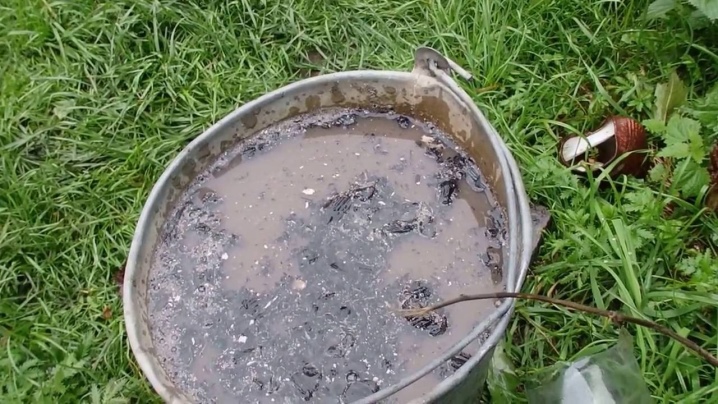
Remarkable results are obtained by spraying with microelements on strawberry leaves. It is recommended to spray them from below. This part is more capable of assimilating nutrients that have fallen on it. With this simple procedure, the number of inflorescences is significantly increased, which means that the yield increases.
Experienced experts recommend feeding during fruiting during the berry picking period, using exclusively organic fertilizers. The best is considered an aqueous solution of poultry manure, mullein and compost.
But to feed remontant strawberries after the first fruiting, during the laying of fruit buds of the future harvest, it is necessary to use mineral complexes. Besides, during this period, there is an intensive renewal of the root system of the bushes. That is why it is worth taking care of a sufficient amount of potassium and trace elements in the soil by introducing nitrophosphate, potassium sulfate, potassium nitrate in the form of aqueous solutions.
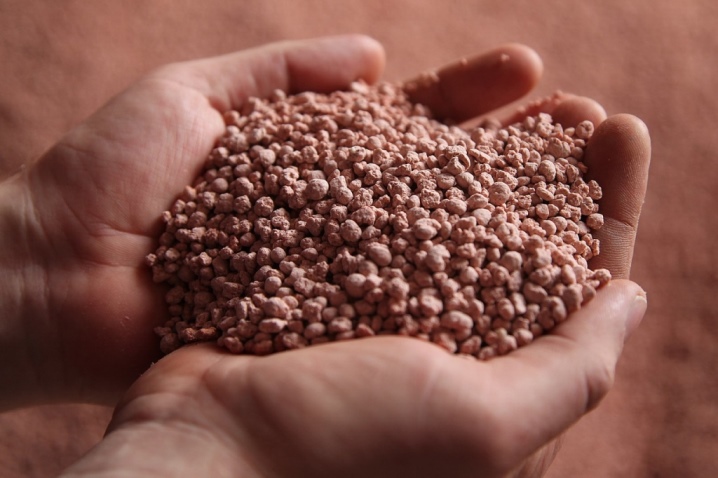
Good results are obtained by foliar feeding "Ruby", "Agros", "Hero". It is recommended to carry out it three times:
- during the formation of young leaves;
- during flowering strawberries;
- at the stage of fruit ovary formation.
If the remontant strawberry bushes are not preparing to bear fruit again, adjustments must be made to the fertilization schedule. After fruiting is complete, only potash fertilizers are applied. Strawberries must be prepared for winter, therefore nitrogen complexes are excluded, since they can provoke plant growth, which will lead to a decrease in resistance to wintering.
In the first month of autumn, the next fertilization is carried out, consisting of nitroammophoska, superphosphate, potassium sulfate and organic matter. Young plants especially need this feeding.
It is necessary to feed remontant strawberries every week or every other week. During the season, these varieties are fertilized 10-15 times.
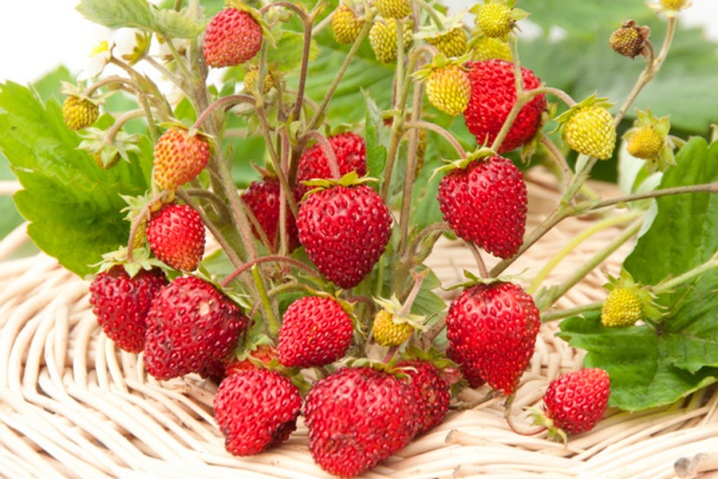
See below for more details.













The comment was sent successfully.